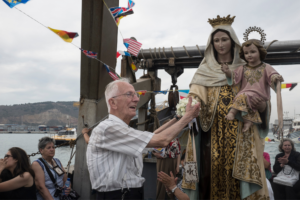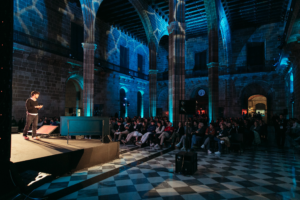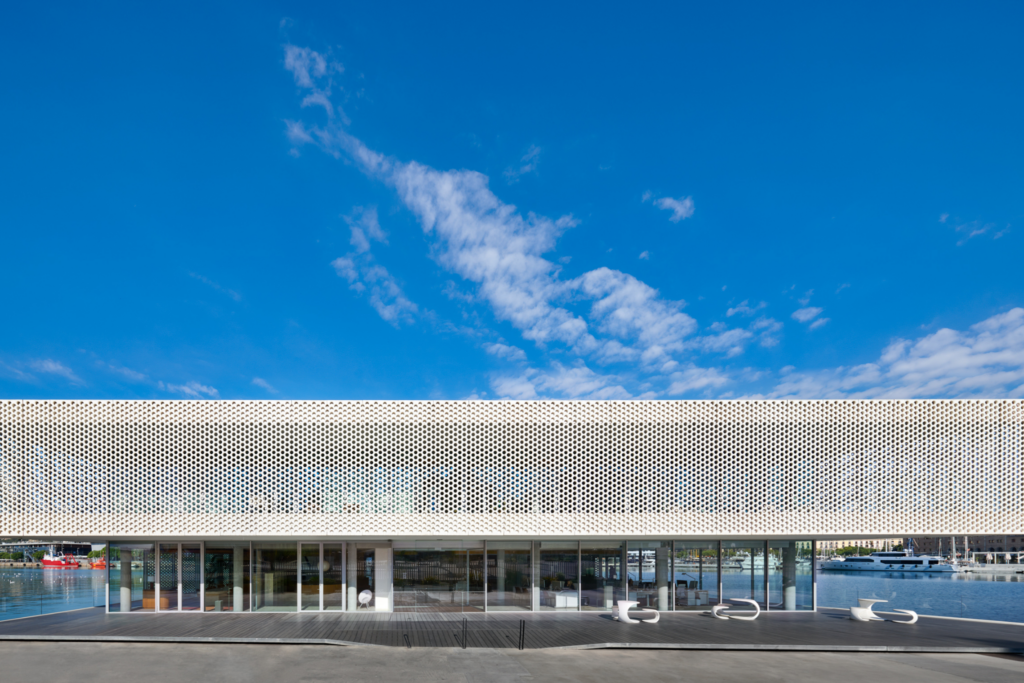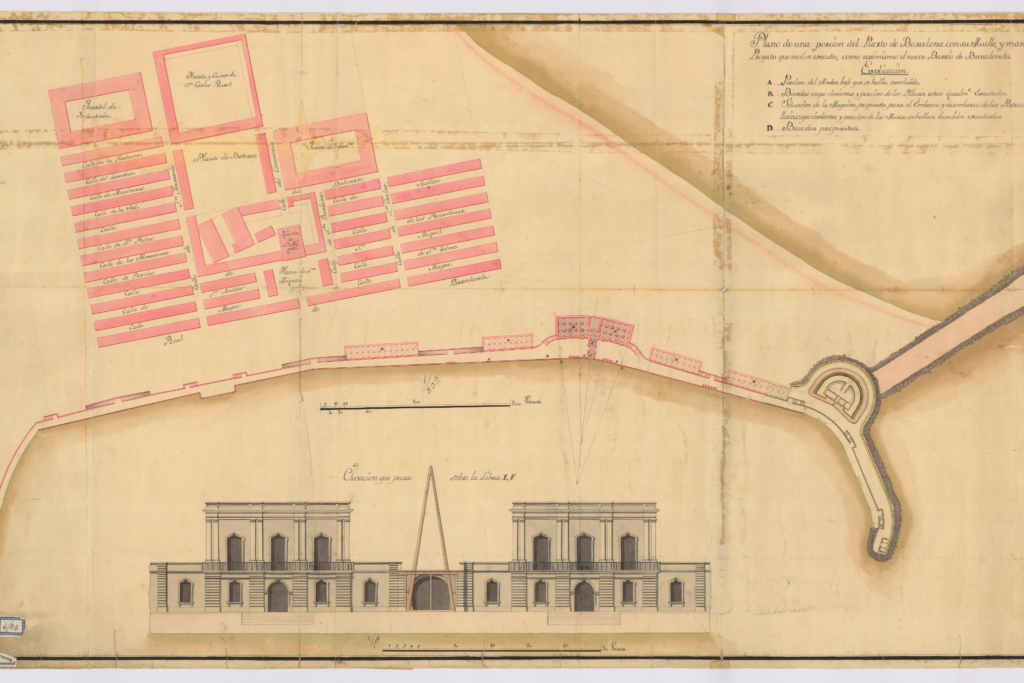
Exhibition “Picasso’s Barceloneta. 1895-1904”
From 9 November to 10 February 2024. On the occasion

Still in embryonic form, with the aim of recovering the lives of women in the Barceloneta neighbourhood, in the periods of the Republic, the Civil War and the Postwar period.
Little do we know about these women, our neighbours, and companions, who in the first third of the twentieth century lived a period of changes never experienced before, at economic, civil, and social levels. They dared to leave their homes and occupy the public space, reserved, until now, only for men. They began to participate in political parties and trade unions and to occupy positions vetoed by women, such as access to education and university.
With the outbreak of the Second Republic, these improvements will be even more remarkable. They began to fight to achieve a degree in economics, law, sexual and political independence. It helped a
lot that for the first time, Spain was constituted as a secular state, allowing women to leave the oppression that had subjected them to the conservative church, where men represented authority and power and women represented obedience and submission.
The arrival of women in Congress will facilitate the beginning of policies for women: the right to vote for women over twenty-three years of age will be approved, in 1932 the law of labour discrimination, the law of protection of female labour, the requirement of insurance in case of
pregnancy, the law of civil marriage and the law of divorce. And in 1936, with Frederica Montseny, as Minister of Health and Social Assistance, there will be a first bill on abortion.
All these rights, achieved during those years, will begin to be lost on July 18, 1936, with the uprising of some part of the army. But they refused to go back home and actively participated in the revolutionary or counterrevolutionary construction and in the organization of the rearguard. From the first moment, they were very active, mobilizing en masse, regardless of which side they belonged to. On the part of the right-wing parties, organizations such as Catholic Action and the Women’s Section gained notoriety and, on the part of the left-wing women, the Agrupación de Mujeres Antifascistas (Anti-Fascist Women's Group), where socialist, communist, and republican women were grouped, and the organization Mujeres Libres (Free Women), formed by anarchists, stood out.
But there was a group of women who went beyond their demands and wanted to participate directly in the war, marching to the front, on an equal footing with their comrades. They were the so-called militia women. Although they were a minority, they managed to break with the established order, changing the gender role and demonstrating that women could also defend their ideas, be brave and go to the front to fight like men. These convictions were too innovative for the time, when society was not yet morally prepared for this ideological shift. Voices against their participation in armed combat quickly appeared, to the point of producing conflict between their own parties and organizations. The militia women would be at the front until March 1937, when they were forced to go to the rear, along with the other women. They would take advantage of the fact that the regular Republican army would replace the militias and they would return to the patriarchal place that was theirs as a gender, from which they should not have left, and they would be degraded to the level of prostitutes and bad women. In short, they never came to be understood by their own leftist revolutionary comrades, who at no time wanted to defend or help them.
These brave women, who skipped all the gender rules that existed, were also from our neighbourhood. We continue warning that it is not a definitive study, there is much to investigate, but with the aim of making a list of the militiamen who went to the front, through the allowance payments, we have found some names of women, specifically about twelve militiawomen, neighbours of our neighbourhood, among more than four hundred militiamen found, which shows us a small history of a few barcelonetinas; who fought to break any kind of gender and who were not afraid to go and die for their ideas and to achieve a better world.
● Isabel Josep Rius , from C/ Somorrostro, 45, assigned to the Aragon front in the Durruti Column. Militia member of the CNT.
● Angela Miguel Aviran , C/ Atlántida, 105, 2 on 1 a militia member of ERC in the Rafael Bayo column. Assigned to the Mallorca front.
● Rosa Gutierrez Rodriguez , C/ Magallanes, 137. CNT militia member. Francisco Ascaso column assigned to Huesca.
● Asunción Escrivano Palomares , of Magallanes St., 19 1 er 1 a . of the Sanitary Committee. She belonged to the Anti-Fascist Militias of Catalonia in the War Health unit. She left for the front on August 17, 1936, assigned to the Aragon front.
● Victoria Cortes Huertas , of C/Magallanes, 44 1er 2a affiliated with the Catalan State. Assigned to the Santaularia column.
● Esperanza Cervera Ambrosio , assigned to the ship Ciudad de BCN affiliated to the PSUC. (This ship transported troops to Ibiza and Mallorca. Later it transported volunteers of the International Brigades. It was sunk in 1937).
● Genara Gonzalez Ibañez, from C/ Grau i Torres, 32 1st 2nd affiliated to the PSUC in the Del Barrio column. Assigned to the Aragon front.
● Amparo Sebastian Ferrer , of Pasaje del Gasómetro , 4. Militia member of the Anti-Fascist Militias of Catalonia, assigned to the Francisco Ruiz García Column. Infantry Section. She marched to the front on August 18, 1936. On November 15, 1936 she was assigned to the 19 de julio column.
● Carmen Sanmartin Cabras, of C/ Dr. Giner y Partagás, sn. Column 16, in the security corps assigned to the Huesca front.
● Concepción Soto Barceló , of C/ Atlántida , 29, 2 on 1 a . Belongs to the Anti-Fascist Militias of Catalonia, affiliated with the CNT. She was assigned to the front of Aragon, in the Durruti Column. Vicente Valle Albert lives in her apartment, militiaman stationed in the same place and affiliated, also to the CNT.
● Florentina López Perez, of C/ Sevilla, 27 bajos. She was stationed at the Hospital Train No. 2 in Sariñena, on the Aragon front. Nurse, health personnel.
● Dolores Montseny Benajes, from C/ Soria, 86 2º 4ª, affiliated to the CNT. She marched to the front with the Anti-Fascist Militias of Catalonia, in the Aguiluchos Column of the FAI, on August 28, 1936, at only 16 years of age as a volunteer.
We know very little about them, but it is a challenge to learn about them and to find out what their life was like. For this reason, we ask for the collaboration of the neighbours, if anyone can provide us with information about these women or if they know of the existence of others. We would be grateful if you could contact this publication.
Photograph: Pérez de Rozas . Via Laietana, 1936. The first on the right, may be Dolors Montseny, about to go to the front.
Federica Montseny, the first woman minister in Europe Woman, anarchist, libertarian and revolutionary, Federica Montseny came to hold a position hitherto reserved for men: Minister of Health and Public Assistance. Appointed a few months after the beginning of the Civil War, in November 1936 until May 1938 in the Government of Largo Caballero.
You may also be interested in

From 9 November to 10 February 2024. On the occasion

A real institution in La Barceloneta. He was much more

The 4th edition of the benchmark event for the technology
More articles

Celebrating Christmas is one of Marina Puerto Viejo’s most cherished traditions. And this year, as

Next to a rubbish bin I’m going to find a very old Gladiator suitcase and

The basket of “La Garba”, raffle on the 5th of January at 12h. Days of

Background Throughout its history, Barceloneta has always been very active at both a commercial and associative
| Cookie | Duration | Description |
|---|---|---|
| _ga | 2 years | The _ga cookie, installed by Google Analytics, calculates visitor, session and campaign data and also keeps track of site usage for the site's analytics report. The cookie stores information anonymously and assigns a randomly generated number to recognize unique visitors. |
| _ga_2DMP7XMBDL | 2 years | This cookie is installed by Google Analytics. |
| Cookie | Duration | Description |
|---|---|---|
| pll_language | 1 year | The pll _language cookie is used by Polylang to remember the language selected by the user when returning to the website, and also to get the language information when not available in another way. |
| Cookie | Duration | Description |
|---|---|---|
| cookielawinfo-checkbox-advertisement | 1 year | Set by the GDPR Cookie Consent plugin, this cookie is used to record the user consent for the cookies in the "Advertisement" category . |
| cookielawinfo-checkbox-analytics | 1 year | Set by the GDPR Cookie Consent plugin, this cookie is used to record the user consent for the cookies in the "Analytics" category . |
| cookielawinfo-checkbox-functional | 1 year | The cookie is set by the GDPR Cookie Consent plugin to record the user consent for the cookies in the category "Functional". |
| cookielawinfo-checkbox-necessary | 1 year | Set by the GDPR Cookie Consent plugin, this cookie is used to record the user consent for the cookies in the "Necessary" category . |
| cookielawinfo-checkbox-others | 1 year | Set by the GDPR Cookie Consent plugin, this cookie is used to store the user consent for cookies in the category "Others". |
| cookielawinfo-checkbox-performance | 1 year | Set by the GDPR Cookie Consent plugin, this cookie is used to store the user consent for cookies in the category "Performance". |
| CookieLawInfoConsent | 1 year | Records the default button state of the corresponding category & the status of CCPA. It works only in coordination with the primary cookie. |
| elementor | never | This cookie is used by the website's WordPress theme. It allows the website owner to implement or change the website's content in real-time. |